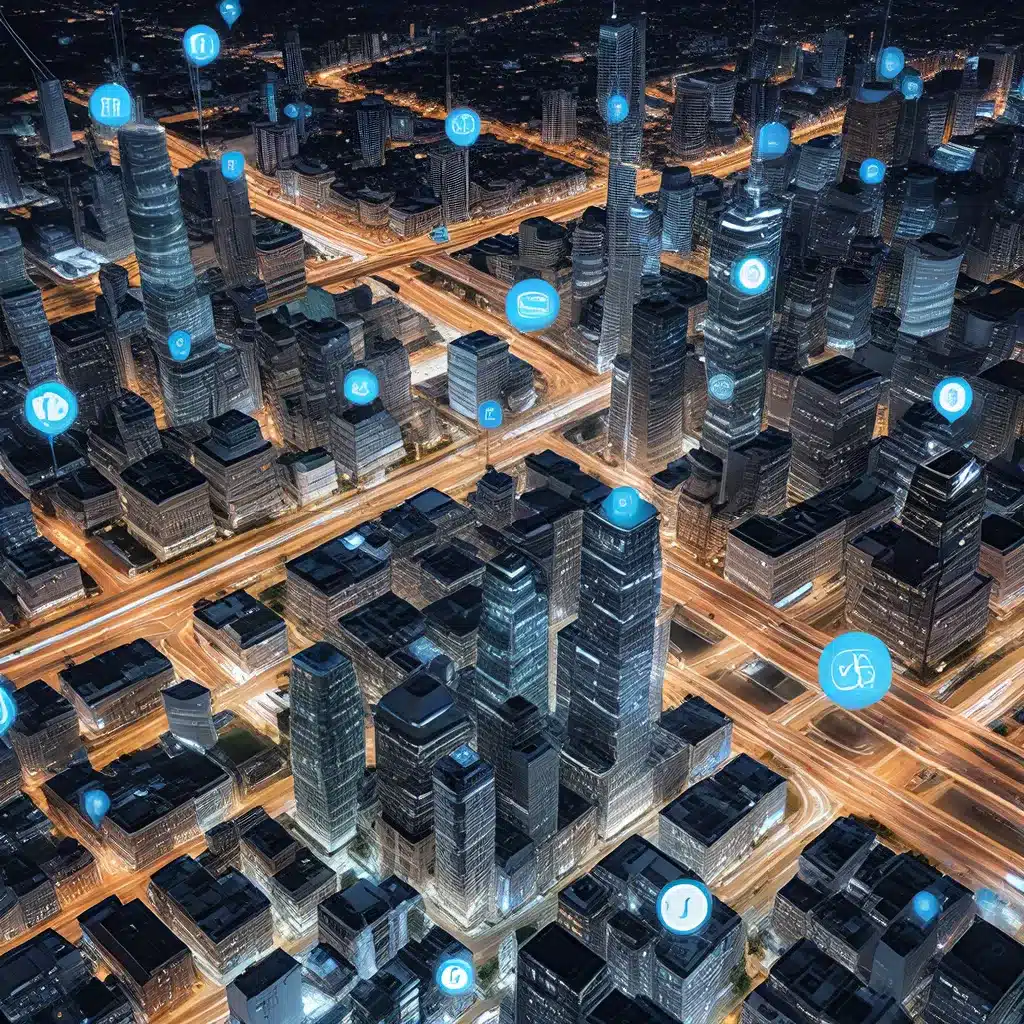
Unlocking the Potential of Sensor Networks in the IoT Landscape
The rise of the Internet of Things (IoT) has revolutionized the way we interact with our environment, enabling a vast network of interconnected devices that collect, analyze, and exchange data. At the heart of this transformative ecosystem lies the sensor network, a critical infrastructure that empowers IoT applications across industries. As we navigate the ever-evolving landscape of sensor-driven IoT systems, the imperative to maximize network capacity, control, and resilience has never been more pressing.
Optimizing Network Capacity for Data-Driven Insights
In the sensor network paradigm, the efficient management of network capacity is paramount. Sensor nodes, strategically deployed to gather real-time data, are often constrained by limited resources, including energy, bandwidth, and computational power. Striking a delicate balance between these constraints and the need for high-fidelity data is the key to unlocking the true potential of sensor-driven IoT systems.
Emerging technologies, such as 5G and edge computing, have revolutionized the way sensor networks operate. By leveraging ultra-low latency and high-bandwidth communication channels, these advancements enable the seamless transfer of vast amounts of sensor data, enabling real-time decision-making and data-driven insights. Furthermore, the integration of edge computing capabilities at the sensor nodes themselves allows for localized processing and aggregation, reducing the strain on centralized systems and optimizing network capacity.
One innovative approach to enhancing network capacity is the implementation of hierarchical sensor network architectures. By organizing sensor nodes into a multi-tiered structure, with gateways and aggregation points strategically placed, the flow of data can be streamlined, minimizing congestion and improving overall throughput. Additionally, the incorporation of adaptive routing protocols and dynamic resource allocation techniques can further optimize network capacity, ensuring that the available resources are efficiently utilized to meet the demands of data-intensive IoT applications.
Achieving Comprehensive Control and Adaptability
In the dynamic world of sensor-driven IoT, the ability to maintain comprehensive control over the network is a critical success factor. Centralized control mechanisms, empowered by advanced software-defined networking (SDN) and network function virtualization (NFV) technologies, enable real-time monitoring, configurable policies, and adaptive responses to evolving network conditions.
Feature papers have highlighted the importance of flexible and programmable control planes in sensor networks, allowing for dynamic reconfiguration and optimization of network resources. By leveraging machine learning and artificial intelligence algorithms, sensor networks can adapt to changing traffic patterns, environmental conditions, and user demands, ensuring optimal performance and service delivery.
Moreover, the integration of blockchain and distributed ledger technologies within sensor networks has the potential to revolutionize the way we approach trust, security, and transparency in IoT ecosystems. These decentralized architectures can facilitate secure data sharing, tamper-proof record-keeping, and autonomous, self-governing sensor networks, further enhancing the overall control and adaptability of the system.
Ensuring Resilience and Fault Tolerance
In the face of complexity, scale, and unpredictability inherent in sensor-driven IoT systems, the imperative for resilience and fault tolerance cannot be overstated. Sensor networks are often deployed in harsh environments, exposed to various natural and man-made threats, ranging from physical damage to cyber attacks. Ensuring the continuous operation and reliable delivery of critical data is a paramount concern for IoT stakeholders.
To address these challenges, sensor network designs must incorporate redundancy, failover mechanisms, and distributed intelligence. Redundant sensor nodes, strategically placed, can mitigate the impact of individual node failures, while self-healing and self-organizing capabilities can enable the network to adapt and recover from disruptions automatically. The integration of edge computing and fog networking further enhances resilience by distributing processing and decision-making closer to the data sources, reducing the reliance on centralized infrastructure and improving fault tolerance.
Editors Choice articles have highlighted the importance of security protocols and encryption mechanisms in ensuring the integrity and confidentiality of sensor data, a critical aspect of resilience in IoT systems. By incorporating robust security measures, sensor networks can safeguard against cyber threats, data breaches, and unauthorized access, preserving the reliability and trustworthiness of the overall system.
Powering the Future of Sensor-Driven IoT
As the world continues to embrace the transformative potential of the Internet of Things, the role of sensor networks in unlocking new possibilities and driving innovation has become increasingly prominent. By maximizing network capacity, enhancing control and adaptability, and ensuring resilience and fault tolerance, sensor-driven IoT systems can unlock a future where data-driven insights, real-time responsiveness, and seamless integration with the physical world become the norm.
The sensor network realm is a dynamic and rapidly evolving landscape, with advancements in communication technologies, edge computing, and security protocols continually expanding the boundaries of what’s possible. As we navigate this exciting frontier, the sensor-networks.org platform remains committed to empowering professionals, researchers, and enthusiasts alike, fostering a collaborative ecosystem that drives the sustainable and responsible development of sensor-driven IoT systems.